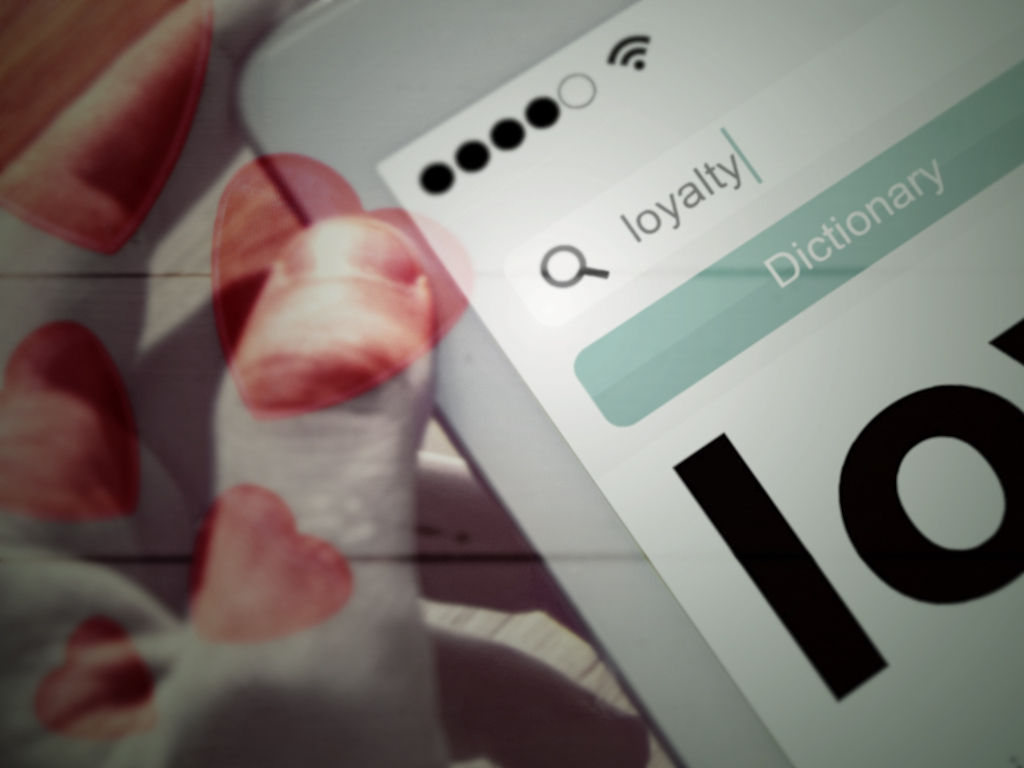Challenger brands are Davids. They are not only small, but ambitious. And successful challenger brands can revolutionize entire industries. So what does it take to be a challenger brand?
Speakers at ad:tech’s recent conference in San Francisco discussed what it takes to be a challenger brand, as well as how thinking like the venture capitalists nearby can help marketers overcome fear, embrace failure, and act more like challenger brands.
Part I: Defining Challenger Brands
According to Mark Barden, partner at brand consultancy eatbigfish, a challenger brand challenges assumptions and is on a specific mission in a given industry. Notable examples include eyewear brand Warby Parker and rental site Airbnb.
The term “challenger brand” comes from Barden’s business partner, Adam Morgan, who wrote the book, “Eating the Big Fish.”
“We live in such turbulent times of massive disruption, sooner or later you will be cast in the role of a David to a Goliath,” Barden said.
What else do these so-called challenger brands have in common? And how does a brand become one?
Ambition
For challenger brands, ambition is much, much greater and more important than resources.
“Simply being small is not enough,” Barden said. “You have to have ambition and a willingness to close the gap.”
He points to mobile phone operator T‑Mobile, which calls itself the “Uncarrier” and has tackled some of the ills of the cell phone industry “and leaves no uncertain terms of what it is trying to do,” Barden said.
Challenge
Brands must figure out what they are challenging and create a story that has tension in its heart.
“It’s not always about who you are challenging,” he said. “Sometimes when you think about what you’re challenging [you have to look at] what’s the big cultural monster we can take on and by slaying that monster will improve the fortunes of those we serve?”
A good example of this is personal care brand Dove, which Barden said has identified the beauty myth as the monster it wants to slay with efforts like its #BeautyIs campaign.
Choice
Challenger brands provide new criteria of choice and change the way the world thinks about a given industry.
Barden also points to the brand Method, which manufactures natural, nontoxic home products, and is trying to introduce something new into the soap category to change purchase criteria with characteristics like aesthetically pleasing packaging.
“You cannot compete with the big fish by outdoing the big fish on their terms. You have to introduce something new,” Barden said. “It’s not just always about wanting to fight Goliath. Sometimes it’s about changing the rules and challenging Goliath to a foot race or chess match – whatever the big guy cannot do.”
Audi also changed the conversation around progressive luxury with its $120,000 RS7 model and its more fuel-efficient turbo diesel technology. It also launched its A6 model with messaging about helping drivers better navigate on the crumbling infrastructure of America’s roads, Barden notes.
Virgin America, too, asked what happened to glamor in the airline industry.
“We’re treated like self-loading freight,” Barden said. “But [Virgin America asked], ‘What if we made it look like a night club?’”
Conviction
Challenger brands need something to believe in and that “what you’re doing is the right thing to do and the world needs this.”
In addition, Barden said intelligent naivete is often a real advantage to challenger brand.
“It takes big ambitions to change the way the world feels about cleaning and flying,” he adds.
Part II: The Guardian’s Guide To Acting Like A Challenger Brand
While the Guardian is a 200-year-old brand in the U.K., it is only three years old in the U.S., so it is in a unique position as both an established and an upstart brand.
“We didn’t set out to be a challenger brand in the U.S., we just came here and do what we do best,” said Eamonn Store, CEO of the Guardian North America.
As such, Store offers four tips for acting like a challenger brand:
1: Found your business on principles that are fundamental to you and that you really care about.
At the Guardian, this means fearless independence in which staffers report to themselves and hold each other accountable.
“It’s open, participatory, free and about interacting with the community,” Store said. “There’s a huge amount of commentary on the articles we write about.”
2: Obsess about your obsessions.
“We don’t hire journalists to do beats. You write about whatever you’re obsessively passionate about,” Store said.
In fact, he said NSA whistleblower Edward Snowden came to the Guardian with his story because “he knew we’re independent and we have fierce journalists and he knows we care about privacy.”
3: Be true to yourself, not what you think others want you to be.
According to Store, this translates as values over valuation. He said the brand continues to invest aggressively in talent and has a strong Millennial following and continues to provide more content and depth to bring its audience back and give it more reasons to return.
In addition, Store said the Guardian doesn’t try to be everything to everyone.
“The U.S. is a massive market with significant advertising revenue. We don’t need to be everyone’s friend. We don’t need 100 million readers,” Store said. “We focus on finding clients that we want to go deep with and build enduring relationships.”
4: Build a culture that underpins it all.
In the case of the Guardian, this means employees sit as one team and work collaboratively and it recruits what Store calls the right talent from the right sectors.
Per Store, the Guardian is challenging complacency in the U.S. by “[focusing] obsessively on readership.”
He points to legacy news brands in the U.S. “that are holding on stories because they are financed by advertisers and have bias around opinion.”
“Legacy news organizations in the U.S. have become obsessed with their own celebrity,” Store said. “When I see the fights between Fox and NBC and massive organizations that are siloed, [I realize] we have that issue in the U.K. with 750 journalists that have lost touch with the readership.”
But that’s not to say the Guardian doesn’t do native ads.
“The important thing about native advertising [is you have to look at] why you’re doing it and what you’re trying to accomplish,” Store said. “We don’t do it because we’re chasing a revenue stream. We don’t look at it that way.”
As such, the brand does native advertising in “areas where we have a real passion” like with ice cream brand Ben and Jerry’s and a climate change campaign.
“When we talk about partners we want to work with, we sit down with the editorial team and ask, ‘What clients/categories do you think fit with us?’” Store said. “Ben and Jerry’s wants to do interesting work, but it resonates with us as a brand and with our readership.”
Part III: Marketing A Challenger Brand Like A Venture Capitalist
Per Julian Aldridge, vice president of brand evangelism and activism at Charles Schwab and Co., his brand is challenging complacency, as well as lethargy and defeatism.
Aldridge said his firm broke down barriers upon its founding by enabling regular consumers to invest in the stock market and it has since grown to $3 trillion in assets under management.
And while fear often holds marketers like himself back, Aldridge pushes the concept of what he calls “venture marketing,” in which he said he has taken the “VC attitude” of spreading lots of small bets and expecting most to fail, but then testing and learning from those “investments” and learning from both his successes and the failures.
“You can leap up the success ladder by failing,” Aldridge said.
As a result, Aldridge said he has adapted three marketing lessons from the Silicon Valley:
- Lead from the front. Do things differently and quickly. Set your brand up for quick learning and failure.
- Create a methodology you really believe in and that gives you agility.
- Cement an enduring venture culture that celebrates failures as much as successes.
Further, Aldridge provides three examples from Schwab.
Venture Marketing Example #1
Aldridge said Schwab used a company called Score in an initial campaign that created a connection between the sacrifices a basketball player makes every day and the sacrifices Schwab clients make to create a better future for themselves.
Based on the success of that campaign, the brand had the courage to launch a campaign for Schwab Intelligent Portfolios around March Madness and increase its investment by fivefold from its initial toe dip.
Venture Marketing Example #2
An early partnership with Virgin America didn’t work out, but it but led to partnerships with other brands like Nespresso and Smart, which have been more successful, Aldridge said.
Venture Marketing Example #3
An early series of influencer-generated videos about positive change on Vimeo garnered 2 million views, which, Aldridge said, gave the brand the courage to try something different with its Intelligent Portfolios and integrate it into its #SoAmazing campaign. That, in turn, led to a pop-up store as part of its #OwnYourTomorrow campaign in which the brand demonstrated that investing could be as easy as ordering a cup of coffee by allowing consumers to actually order coffee.
“It’s about creating a foundation to allow yourself to experiment, succeed, and fail and it’s about doing things one mile at a time and creating an enduring culture from the land of theory over wall of fear and to the land of action,” Aldridge said.
What’s your take on challenger brands and venture marketing?



